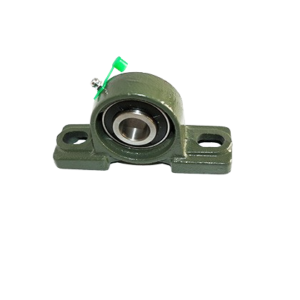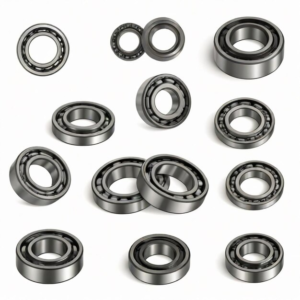Industrial bearings are vital components in mechanical equipment, but over time, they can seize due to wear, corrosion, or improper lubrication. When this happens, removing the bearing becomes extremely difficult. The correct method depends on the condition of the bearing, the equipment involved, and whether you plan to reuse or replace the bearing. Below, NSAR Bearings provides effective methods for safely and efficiently removing a seized bearing.
1. Safety First
Before attempting removal, always prioritize safety:
Shut down the machine and disconnect the power supply.
Lock out and tag out the equipment to prevent accidental start-up.
Wear protective gloves, safety glasses, and other necessary personal protective equipment.

2. Mechanical Removal Methods
Bearing Pullers
Bearing pullers (available in two-jaw, three-jaw, and hydraulic designs) are the most commonly used tools for removing seized bearings. They apply steady, even pressure to pull the bearing from the shaft without causing excessive damage.
Bearing Splitter and Press
Bearing Splitter slides behind the bearing, providing a secure grip for the puller.
If the shaft and bearing housing are accessible, a hydraulic press can also be used. This method is particularly effective for larger industrial bearings.
3. Thermal Techniques
Heat and cold can be used to loosen the fit between the bearing and shaft.
Heating the Bearing Seat: Controlled heating of the bearing seat causes expansion, which reduces the bearing’s grip. An induction heater is ideal, but a heat gun or blowtorch can also be used (with caution).
Cooling the Shaft: Using dry ice or liquid nitrogen can shrink the shaft slightly, making it easier to slide the bearing off.

4. Destructive Removal (When Planning Replacement)
If the bearing is completely seized and cannot be salvaged, destructive removal may be the best option.
Cutting Tools: Use an angle grinder or cut-off wheel to carefully cut through the bearing race. Once the race is weakened, it can be split with a cold chisel.
CAUTION: Be careful not to damage the shaft or surrounding components when cutting.
5. Chemical Penetrants
Rust and corrosion are common causes of seizure. In this case, applying penetrating oil may help. Let the penetrating oil soak in for several hours before attempting to remove it with a puller or press.
6. Professional Solutions
For large or high-value machinery, professional service may be the safest path. Experts utilize advanced hydraulic extraction tools, induction heaters, and vibration-assisted methods to minimize equipment risk.
7. Preventing Future Bearing Seizures
After removing and replacing the old bearing, take preventative measures to avoid similar issues:
Use anti-seize lubricant during installation.
Ensure the shaft and housing fit correctly.
Maintain a proper lubrication schedule.
Protect bearings from dust, water, and contaminants.
Removing a seized industrial bearing can be a daunting task, but with the right tools and methods—from mechanical pullers to heat treatment techniques and even destructive disassembly—it can be accomplished effectively. Always prioritize safety, and when in doubt, consult NSAR Bearings to protect your equipment and your team.
Copyright © NSAR Bearings. All rights reserved. Privacy Policy